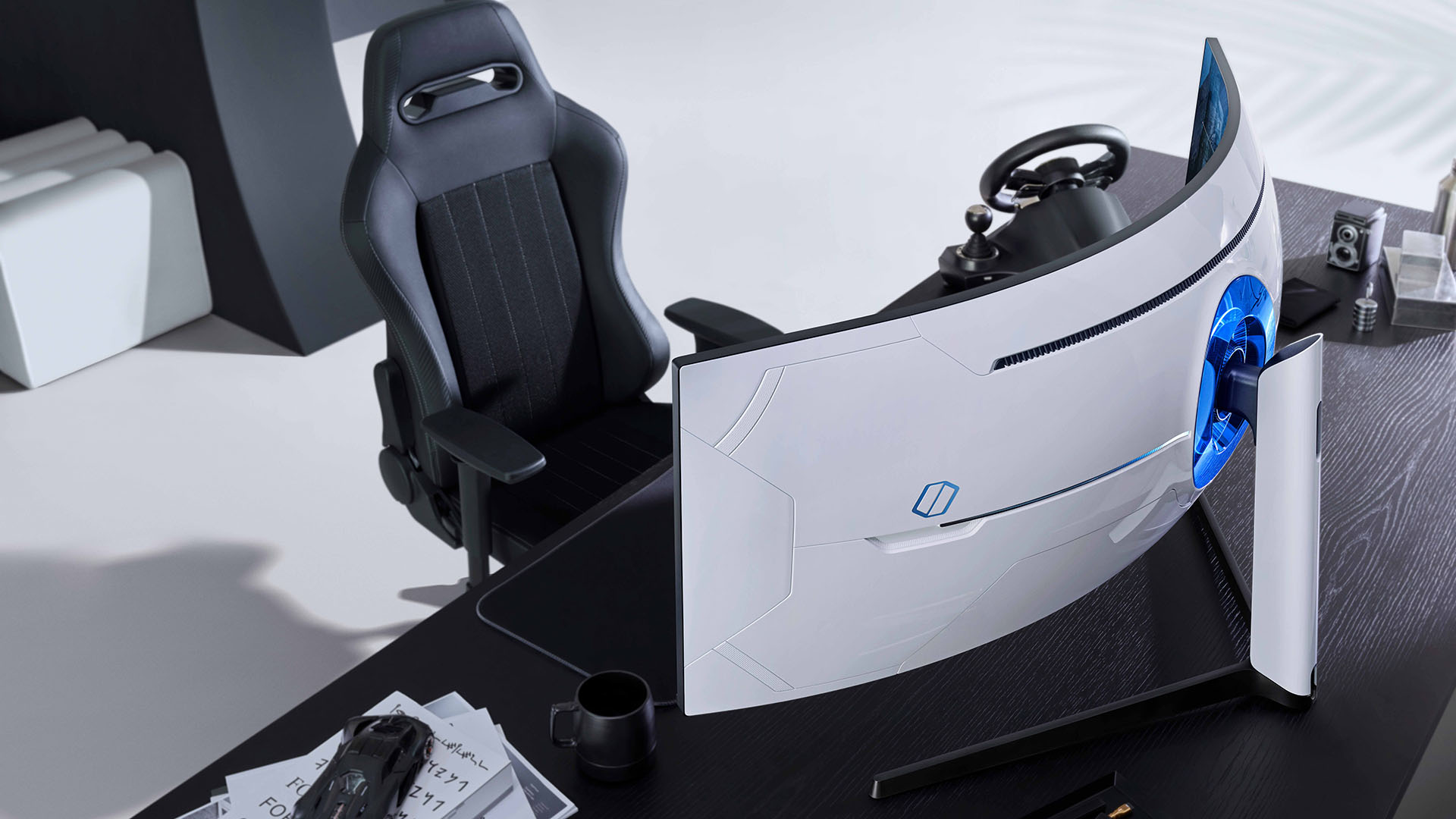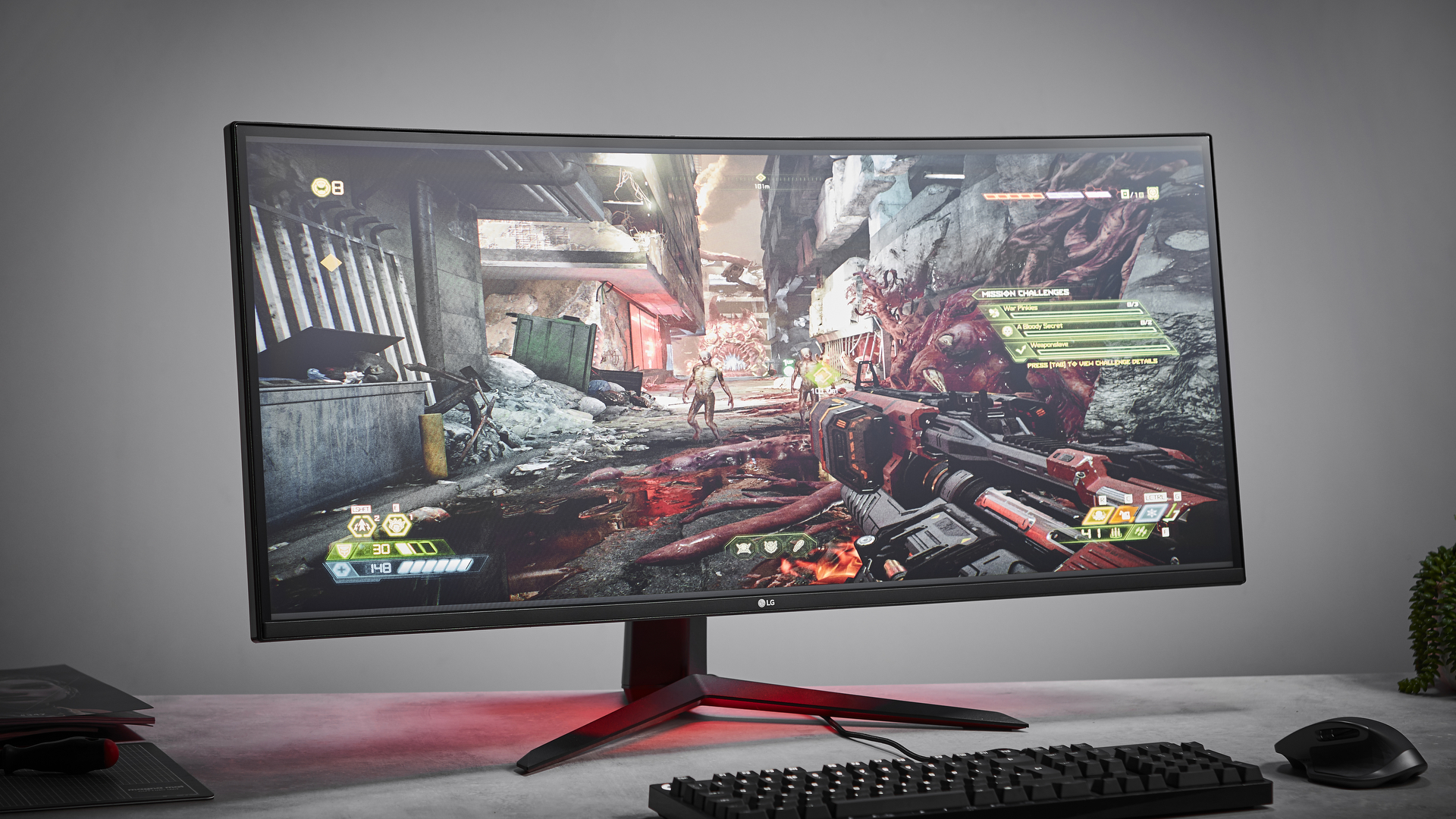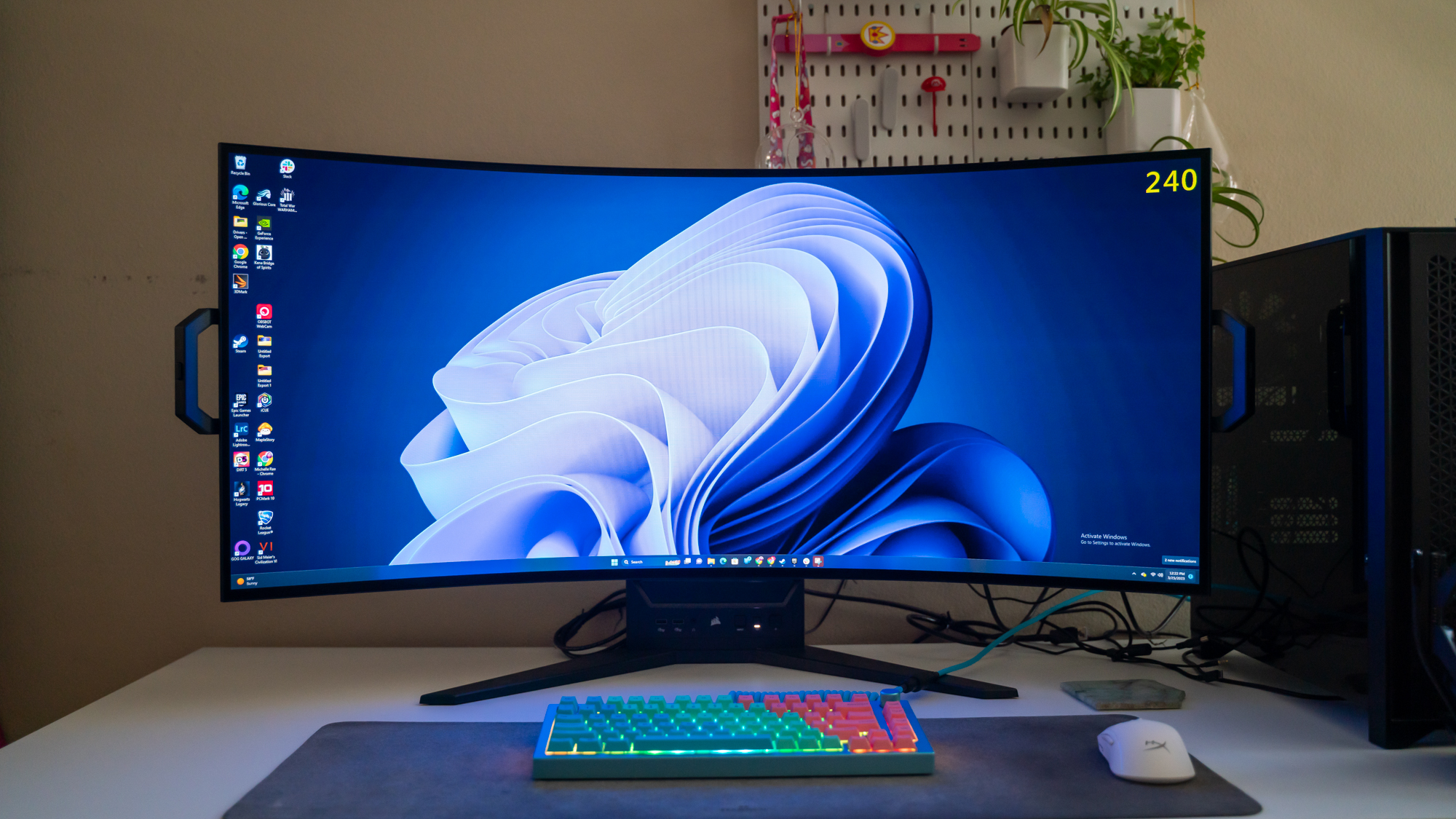Gaming on an ultrawide monitor: the dos and don'ts
Get the most out of that ultrawide monitor for gaming with these tips

Gaming on an ultrawide monitor can be an incredible experience that enhances your gaming sessions like no other. The 21:9 or 32:9 aspect ratio gives you that boast in immersion, throwing you in the middle of the action.
However, it's not so simple transferring from the standard 16:9 ratio monitor to one of the best ultrawide monitors. One of the reasons is that it's newer technology, which means that it works best for certain games that have adjusted to the resolution, while other games are still optimized for 16:9.
As great as these displays are for productivity, it's imperative to know what you’re getting into before molding your entire gaming setup around them. That doesn’t mean you shouldn’t, since they’re among the best gaming monitors available. But, with that in mind, we’ve collected some tips and tricks on what to do and not do when gaming on an ultrawide monitor.
1. Make sure your hardware is powerful enough

Before getting into the nitty gritty of what games work best on an ultrawide monitor or how to make sure they look good, you’ll have to face the hard truth that anyone upgrading their monitor has to – your hardware might not be good enough.
To start, ultrawide monitors not only have that extra physical length, but they almost always have a higher resolution with a 3440 x 1440p resolution being the default for 21:9 aspect ratio monitors. Since most of these wide displays are not meant as budget offerings, they also often come with faster refresh rates and resource-demanding features like HDR. On top of that, they’re bigger overall. The BenQ EX3410R, the smallest model among our picks for the best ultrawide monitors, is currently at 31.5 inches.
With that in mind, we highly suggest you make sure that your GPU can handle 1440p, though ideally you shoot for something a little stronger. Otherwise, you’ll have to sacrifice graphical fidelity for peripheral immersion.
Anyone sporting one of the best graphics cards might not need to worry. However, if you’ve got something like the AMD Radeon RX 7600, which we love for its performance-to-price ratio, know that it might not be able to keep up once you’ve graduated from a 1920 x 1080p resolution.
Sign up for breaking news, reviews, opinion, top tech deals, and more.
2. Use ultrawide for certain titles

Even if your hardware is the latest and greatest, you’re going to run into limitations with an ultrawide as far as what games you can play. And, of the games you can play, some are more suited for these immersive displays.
Make sure to research the best PC games to see if they support wider resolutions. While most modern games do, they might work well with 21:9, but not 32:9 such as Overwatch 2. Also, some games like Dying Light 2 support wider resolution but revert to a 16:9 aspect ratio for cutscenes and menus with black bars on either side, which somewhat ruins your immersion.
If you’re hoping to do some retro gaming while waiting for that next AAA title, you won’t find any ultrawide support. However, that doesn’t mean you can’t play those games. Third-party apps like Flawless Widescreen can help you run an older game like the original Bioshock in a 21:9 aspect ratio, though it won’t necessarily work for every title.
Beyond getting titles to play nice with an ultrawide monitor, certain types of games just benefit more from the extended screen. While you can see more and possibly even gain an advantage in competitive games, single-player titles where immersion is a central part of the experience – think Cyberpunk 2077, God of War, and so on – will benefit most.
That’s because these monitors will fill up a larger chunk of your peripheral vision to make you feel like you’re even more in the action. At the same time, what you’re seeing on the edge of your screen is generally not going to be as important so you can still focus on what’s going on with your character.
3. Think twice for competitive games
As much as those AAA open-world or adventure titles seem to benefit from ultrawide monitors, competitive games sometimes suffer from them. To start, you can’t use them for actual competitions as they can offer an unfair advantage. Though you can make use of that advantage if you play casually, it could also be an issue with the people you play with. After all, no one wants to play with someone they consider to be cheating.
On top of that, ultrawide monitors are not cheap. And, though plenty come with a speedy 120Hz refresh rate, you might want to prioritize getting a high refresh rate monitor with a 1080p resolution like the Alienware AW2524H 500Hz whose 500Hz refresh rate will make even the most fast-paced action look silky smooth.
If you do want to move forward with playing competitive games on an Ultrawide monitor, you still will need to make a few adjustments. Having that extra screen real estate may let you see more of the environment, but the UI, which is almost always pushed to the corners of the screen, will be further away. To counteract that, you’re going to have to dig into the settings to adjust the UI’s positioning so that you don’t have to glance away from the center of the screen to see the map or your health bar.
While you do get that extra length, the edges of the screen can look a little stretched. To adjust for that, you’re going to have to go back into settings, usually under Display or Graphics, and make the Field-of-Vision (FOV) smaller incrementally so that you get rid of that stretching while still taking advantage of an extended display.
4. Be careful of the curve

If you’ve seen a few ultrawide monitors, you’ll probably have noticed something. They’re also, by and large, curved like the Samsung Odyssey OLED G9 we reviewed. Part of what makes these so immersive is that they curve forward, wrapping around your peripheral vision. If they didn’t, you would have trouble seeing the edges making these displays more trouble than they’re worth.
Still, having a curved monitor also comes with some challenges, namely that its curvature looks good for some games and not for others. For example, some games like Cyberpunk 2077 look really good on curved monitors as the vibe is what’s important.
However, games where the perspective can be skewed from that curvature, such as Rocket League and Sid Meyer’s Civilization VI, suffer. These games looked stretched in a way that took away from the experience, even if they were still plenty playable.
In fact, this was specifically tested in our review of the bendable Corsair Xeneon Flex 45WQHD240. While there are only a handful of bendable monitors out there, you should consider one of them if you’re a genre hopper. That is, if you can afford it. If not, it might be a good idea to keep a smaller monitor on hand for the games that don’t look so good on curved monitors.
5. Upgrading audio to keep pace
Any good gaming experience takes more than just stellar visuals. Yes, you want that wide, immersive screen with a sharp resolution and fast, smooth movements. But, you want your other senses to get the full experience as well. Assuming you’ve already gotten one of the best gaming keyboards and best gaming mice as part of your setup, you want to make sure that your audio game can keep pace as that’s just as important for feeling like you're part of the action.
While there are a variety of options when it comes to the best computer speakers, we would suggest something that offers a great soundstage and imaging. The Razer Nommo V2 Pro comes to mind, thanks to its already wide soundstage (and subwoofer) before even turning on its THX Spatial Audio feature. Or, you can go down the rabbit hole with the SteelSeries Arena 9, which offers full, physical surround sound for a listening experience that’s unparalleled.
Of course, if you prefer or need to get one of the best headsets instead, the same recommendation applies. Immersive and detailed sound are key as you’ll find in such options as the SteelSeries Arctis Nova Pro Wireless or the Logitech Pro X 2 Lightspeed.
You might also like

James Holland loves checking out gadgets of all sorts, whether it's audio equipment, laptops, or vacuums (especially of the robot variety), and does so for a number of Future Publications including TechRadar, Top Ten Reviews, Homes & Gardens, and T3. He's built up an expertise for in-depth reviewing over the last four years. When he's not putting in the work on the latest tech, he loves to travel, play music, and eat questionable food.
- Allisa JamesComputing Staff Writer